District on fast track to becoming a ‘global service provider’
A series of deals have been signed to fuel Jing’an’s aim to become a “global service provider”.
The district has been working for years to gather world-renowned professional service firms, such as accountants, consultants and lawyers, to provide one-stop world-class services at residents’ doorsteps.
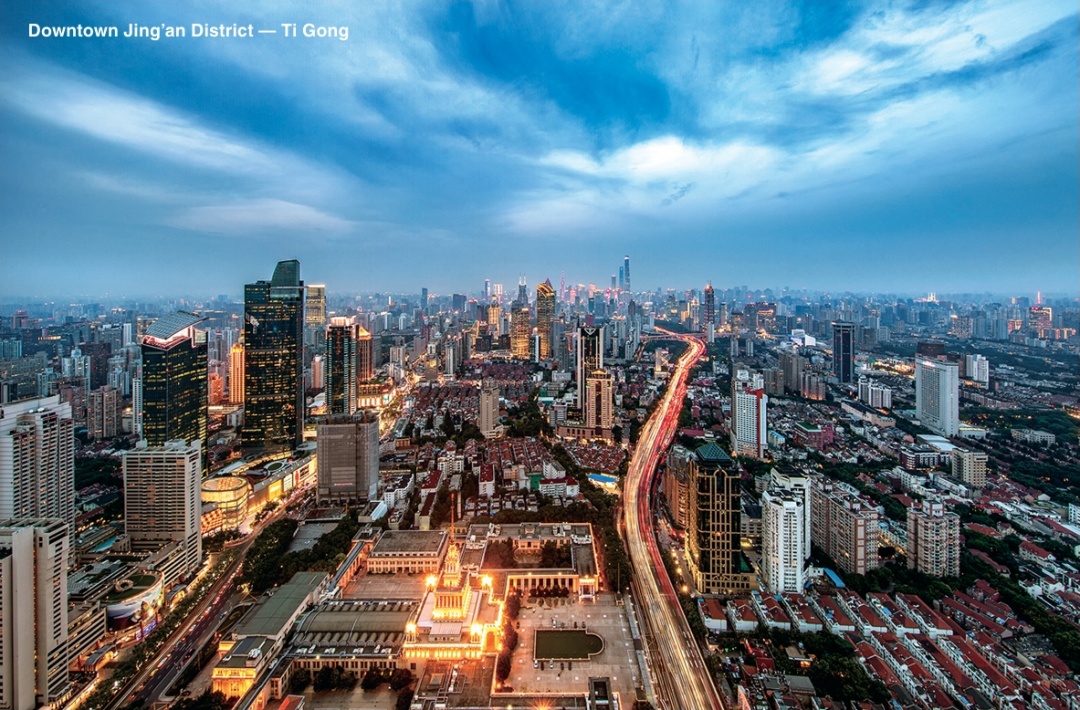
A further step was made at the recent “Gathering in Jing’an, Linking the World” High-End Professional Services and Global Urban Development Symposium, where the Jing’an Development and Reform Commission signed a strategic cooperation with the Shanghai Institute for Global City.
Under the agreement, they will launch research projects, hold international visits and organize other academic exchanges to promote high-end development in its service industry.
The symposium also witnessed the launch of the “GaWC Jing’an Observation Station,” the only one of its kind in Shanghai.
GaWC, the Globalization and World Cities Research Network, is a think tank that studies relationships between world cities in the context of globalization. It has sites known as “observation stations” in cities across the world to collect data for urban and globalization study.
Meanwhile, the “GaWC Shanghai Professional Service Development Index” project was launched, which is expected to provide long-term strategic support to the development of the city’s high-end service industry.
Yu Yong, the district’s Party Chief, said it has become Jing’an’s functional advantage for gathering a cluster of global high-end service providers, and radiating to surrounding places.
Qiu Wenjin, Deputy Director of the Shanghai Development and Reform Commission, encouraged Jing’an to strengthen efforts to support local firms to expand into the overseas market.
Jing’an initiated the “global service provider” project in 2019, and later it escalated to a city-level strategy considered a major economic driver behind the integrated development of the Yangtze River Delta region.
Currently, the district has 92 reputable service providers on its list.
They include consultancy Bain, accounting firm KPMG, advertising agency J. Walter Thompson, law firm Jones Day, bank BNP and testing service provider TÜV Rheinland.
They have helped to create Jing’an a magnet for business.
Last year, the district’s business environment ranked second in the city.
The number of regional headquarters of multinational companies in Jing’an has increased from 82 in 2019 to 124 in 2023.
Over the same period, foreign-related business tax income has increased from 38.25 billion yuan to 43.4 billion yuan, and foreign direct investment from US$1.2 billion to US$1.25 billion.
124
The number of regional
headquarters of multinational companies in Jing’an has
increased from 82 in 2019 to 124 in 2023.
1.25
billion
Over the same period,
foreign-related business tax income has increased from 38.25 billion yuan to 43.4 billion yuan, and foreign direct investment from US$1.2 billion to US$1.25 billion.
With regional offices in Jing’an, some of these service providers have expanded to the Yangtze River Delta region. KPMG has opened branches in Hefei, Ningbo, Nantong and other regional cities, and TÜV Rheinland has set up labs in Hefei and Suzhou.
Jing’an has setup a 10-million-yuan fund to grant subsidies to those who pay for services from Jing’an-based service providers.
Next, the district will work to gather more GaWC-listed service providers, and encourage them to launch new services in emerging sectors such as low carbon, artificial intelligence and blockchain.
A series of measures will be rolled out to encourage domestic service providers tosetup overseas branches, or expand their international network through investment and acquisition. A guide will be released, and training sessions will be offered.
Tradition comes alive in monthlong activities
Festivities galore
Jing’an District marked June with its annual Dragon Boat Festival, the only traditional Chinese festival to be classified by UNESCO, and China’s Cultural and Natural Heritage Day with a full range of traditional events.
Jing’an District celebrated June in a traditional manner with a robust selection of experiences offered around China’s Cultural and Natural Heritage Day and Dragon Boat Festival, the only UNESCO-listed traditional Chinese festival.
Jing’an Culture Center transported visitors back to old Shanghai by reconstructing scenes of daily life in the city’s shikumen stone-gated neighborhoods a century ago, where signature pieces from the district’s heritage-listed brands, like Longfeng’s qipao dresses and Humsuit’s shirts and suits, were on display.
In addition, people could try various centuries-old handicrafts. Popular were making pankou (buttons on cheongsam) and xiangnang (fragrant sachets), a typical Dragon Boat Festival accessory with a metaphor to dispelling evil.
Another popular attraction was Daning Park, where people dressed in hanfu attire attended for a lotus-themed summertime garden party. Besides booming lotuses, there were also displays of traditional Chinese opera, piyingxi (Chinese shadow puppetry) and other folk arts.
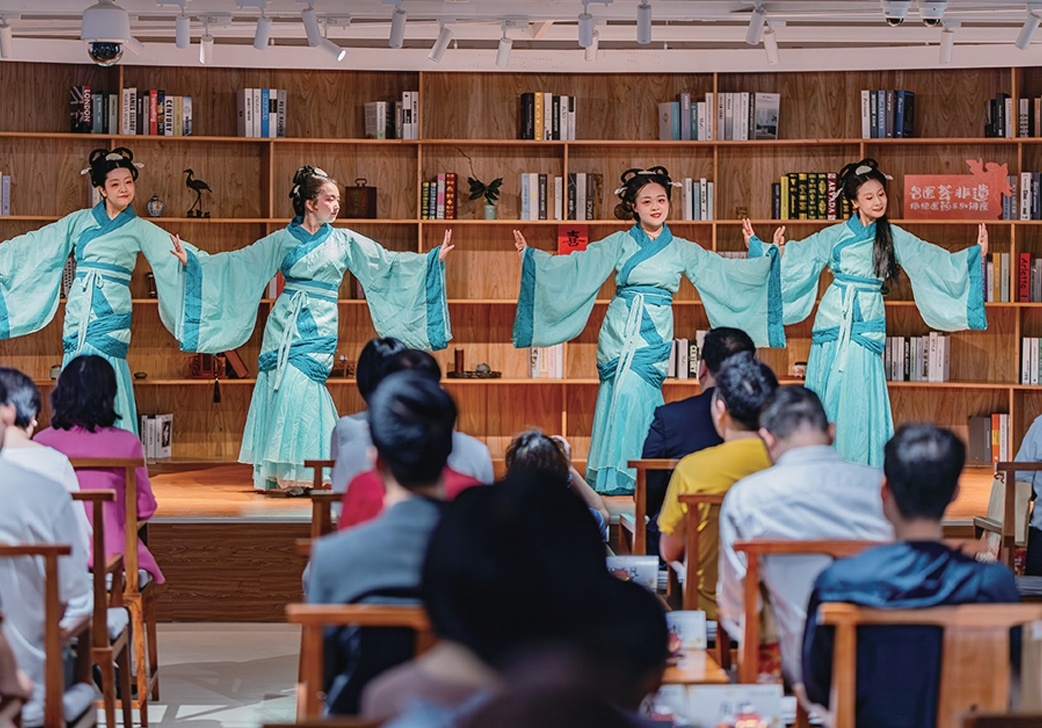
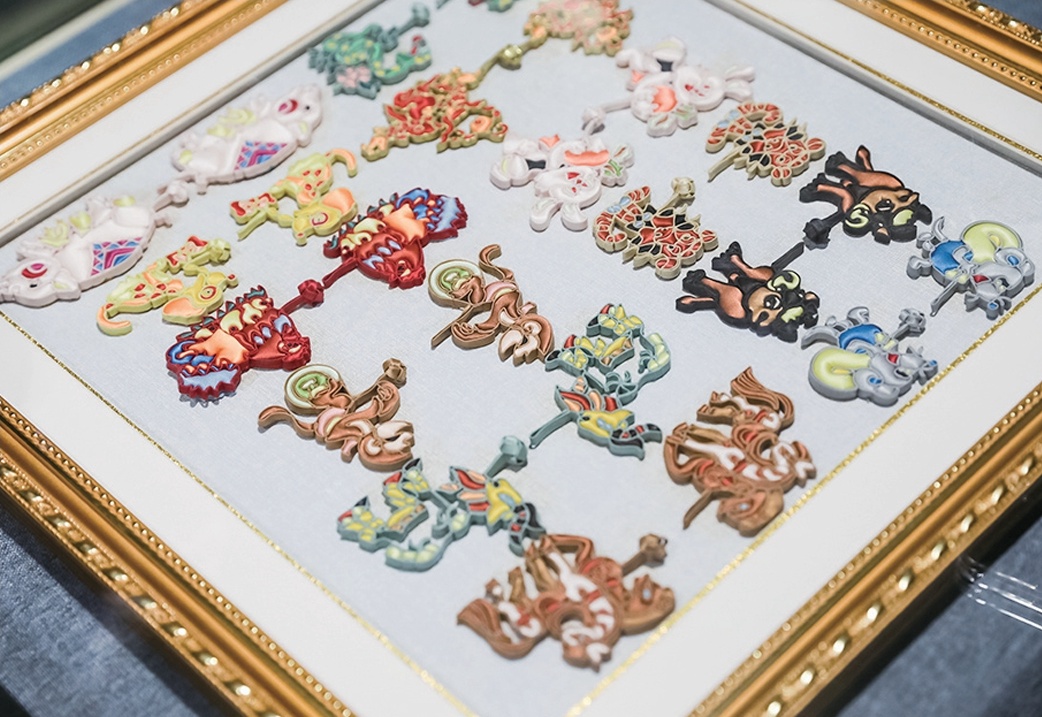
Hanfu attire show (far above) and Pankou buttons (above) on display at Jing’an Culture Center — Ti Gong
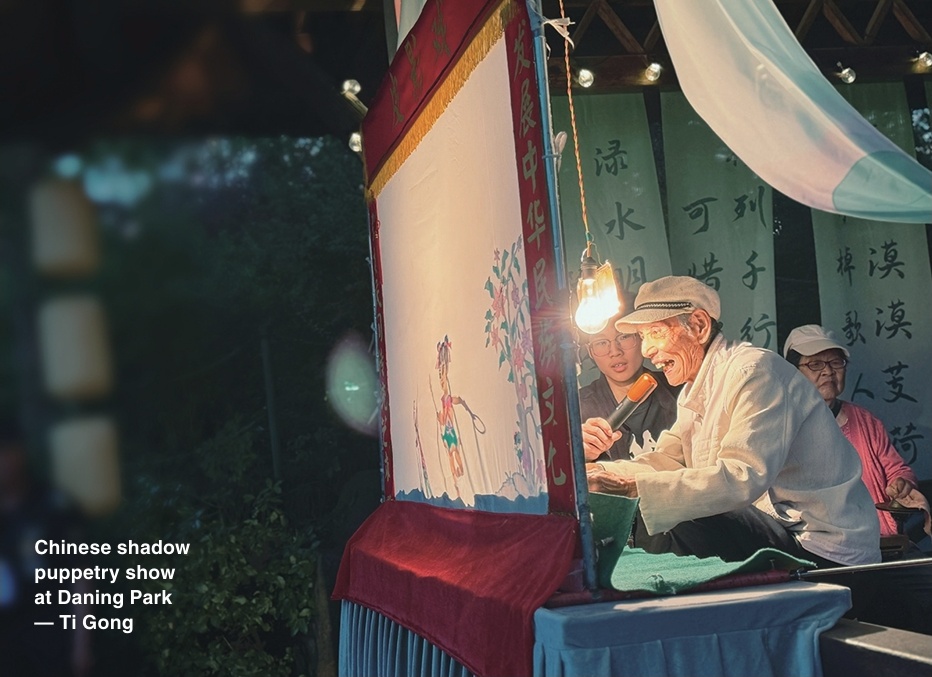
Life Hub @ Daning opened a guofeng (Chinese-chic) fair, and Daning Jiuguang Center presented guofeng music performances as well as dance performances by Chinese and French dancers in celebration of 60th anniversary of Sino-French diplomatic relations.
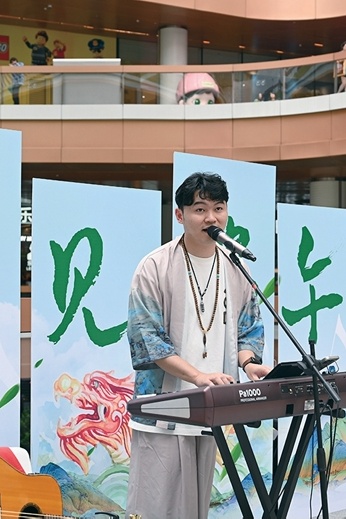
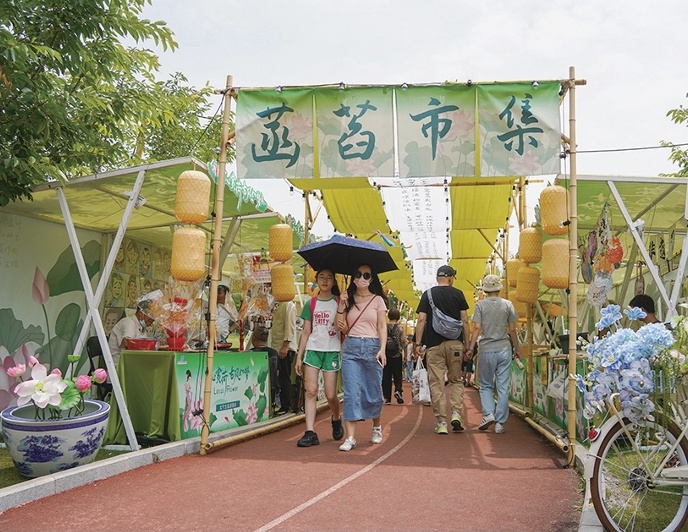
Lotus-themed summertime
garden party at Daning Park
— Jiang Xiaowei
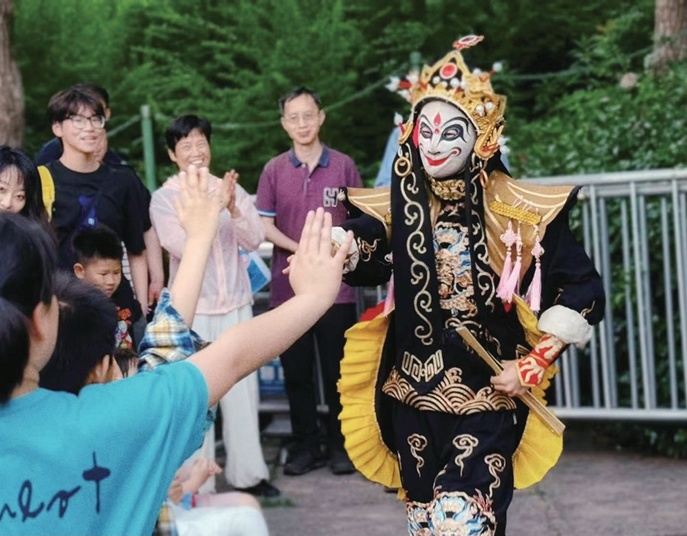
Chinese-chic music performance Folk art show at
at Daning Jiuguang Center Daning Park
— Ti Gong
For those looking to indulge in a captivat ing journey through the district’s cultural heritages, Jing’an has designed a 2-kilome ter walking route: Jing’an Culture Center — Dameihua cloth shoes store — Lei Yun Shang West TCM pharmacy — Humsuit suits —Longfeng qipao shop — Mei Long Zhen restaurant — Lu Yang Cun restaurant — Kai siling pastries — Life Fun food — Zhangyuan Garden — Wang Jia Sha eatery.
Residents explain what’s great
about their community

Jing’an comprises 13 sub-districts – Jing’ansi, Caojiadu, Jiangning Road, Shimen Road no. 2, nanjing Road W., Tianmu Road W., Beizhan, Baoshan Road, Zhijiang Road W., gonghexin Road, Daning Road, Pengpu Xincun and Linfen Road, and one town –Pengpu. Each of them is working to make Jing’an a better place. We invite a local resident or worker to introduce the best of each subdistrict and town in this series.
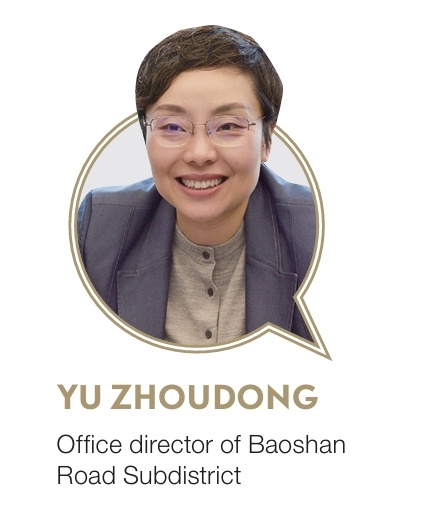
- Eldercare -
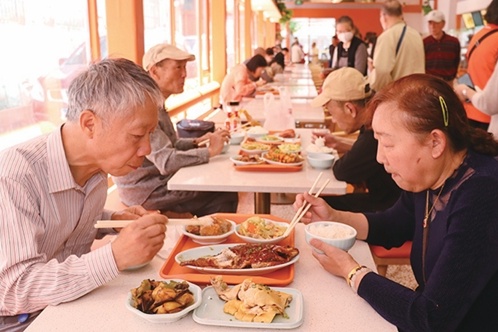
A typical “aging” community, the subdistrict has nearly 20,000 residents aged over 60, accounting for 36 percent of local population.
To cater to increasing needs in elder-care, the subdistrict has created a “15-minute elder-care service circle,” which allows the elderly to access facilities within a 15-minute walk. In addition, a map has been released illustrating different sites, such as nursing homes, daycare centers and health management stations.
Various services are also offered at the doorstep by professionals from the community clinic, including general practitioners, nurses, physiatrists and pharmaceutics. Thus local elders can stay at home and still enjoy basic health checkups, medical consultancy, physio- therapy and other services.
More complicated checkups, such as retinal screening and arteriosclerosis detection are available at neighborhood- based healthcare sites.
The community center, which is popular with the elderly, has worked with nutritionists and traditional Chinese medicine experts to design an elder-friendly menu. Meals will change based on different sea- sons, and calories are marked.
To help elders adapt to today’s digital era, the subdistrict has classes to teach them how to use digital gadgets.
As one of the first cognitive-friendly communities in Shanghai, the subdistrict offers one-stop services, from prevention and evaluation to early intervention, as well as psychological support and consultations for families with elders with cognitive impairment.
To increase local awareness, the subdistrict has designed cartoons and games.
- Revolutionary Past -
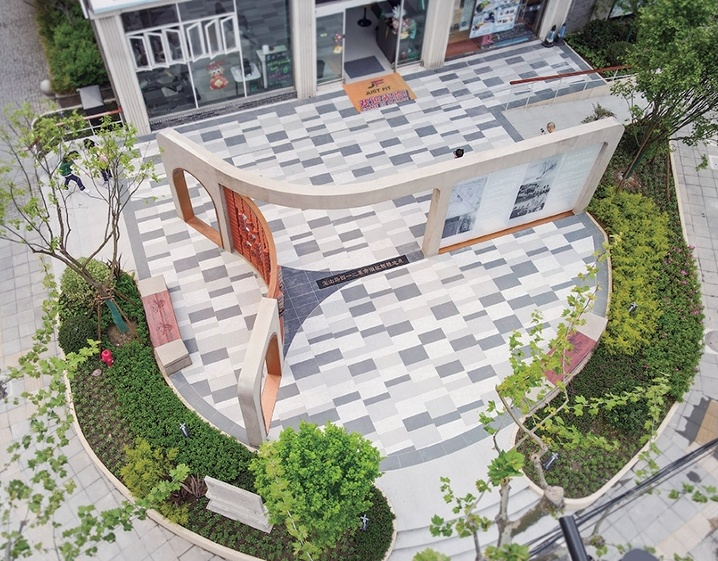
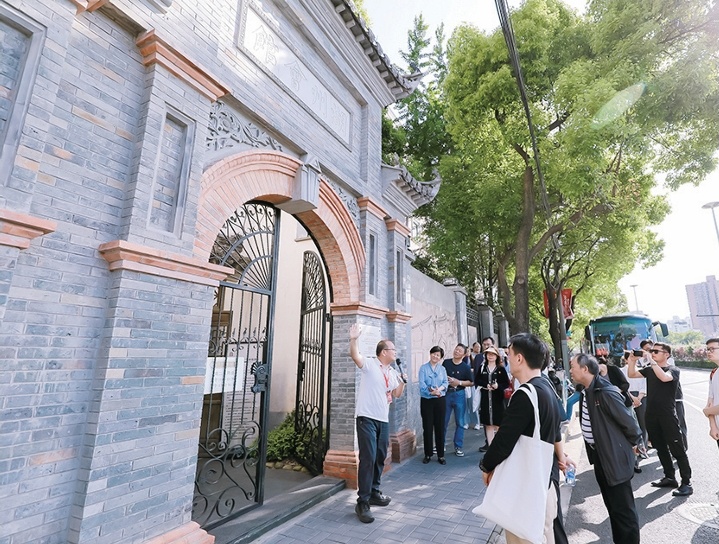
People visit the “red” sites in Baoshan Road Subdistrict to learn the historic past. — All photos by Ti Gong
Baoshan Road Subdistrict has a revolutionary past in its DNA.
It is home to 26 “red” sites, highlighted by former offices of the Central Bureau of the Communist Party of China after the third and the fourth national congresses.
The former site of Shanghai General Trade Union is another historically significant site.
It was initially known as Huzhou Assembly Hall, as it was built in 1900 by 11 businessmen from Huzhou in Zhejiang Province as a place for fellow businessmen to have gatherings.
Later, the Northern Warlords occupied it.
In spring 1927, the house became the headquarters of the 3rd Shanghai Workers’ Armed Uprising and office of the Shanghai General Trade Union. However, within a month, Kuomintang troops took it over.
In 1932, it was bombed by Japanese troops.
Now, the site stands as a two-floored wood-brick memorial restored to its original look a century ago. It integrates the elegance of Jiangnanstyle gardens with Shanghai’s typical shikumen stone-gated architectural style.
The former site of The Commercial Press has also been turned to a memorial. In the early days of the CPC, it served as a secret liaison site, and printed a number of Marxist volumes. It’s also where late Premier Zhou Enlai commanded the 3rd Shanghai Workers’ Armed Uprising.
To offer a panoramic view of its “red” past, the subdistrict has designed a 1.5-kilometer walking tour which links several “red” sites,
including the two memorials.
The subdistrict has also worked with local students to create serial comic books telling clock-and-dagger “red” stories.
It has renovated some corner gardens with “red” elements. The latest one to be unveiled is at the intersection of Baoshan and Baochang roads where installations have been erected to introduce the eight “red” sites around, including the former residence of Qu Qiubai and former site of Changjiang (Yangtze River) Bookstore.
- Legal services -
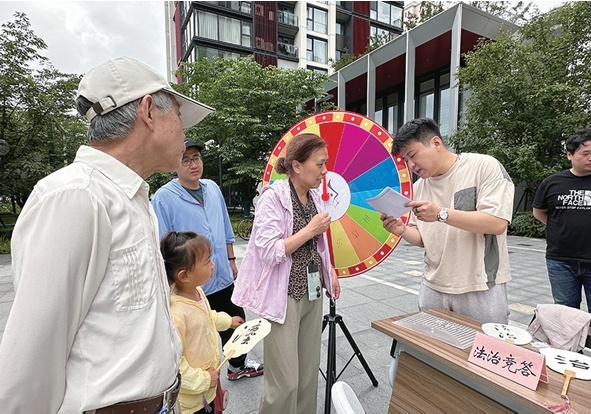
Lawyers provide consultancy to residents at a local community.
The subdistrict has worked with lawyers to provide legal consultancy and assistance to local people at three legal service stations which were put into use in March.
No need to travel to find lawyers and pay highfees, locals can receive the service at their doorstep.
The three sites are 318 Qingyun Road, 336 Zhiyuan Road and 723 Qiujiang Road.
Especially for the underaged and the elderly, the subdistrict is joining with local legal service institutions to hold lectures on a regular basis to raise their awareness of common risks such as fraud and bullying.
There are various activities held in neighborhoods. In a fair held by the subdistrict’s police, market watchdog and urban management authorities in May, stalls were put up to promote protection of consumer rights, antifraud, and other legal problems, with manuals distributed and interactive games held.
The subdistrict has taken advantages of big data and developed an online platform which can monitor common legal problems and identify possible risks, which help local of- ficials and social workers to better safeguard safety.
▶静安区纪念中国共产党领导的多党合作和政治协商制度确立75周年主题活动举行
▶今天8:30开抢!来看看有没有你想看的新片~
▶超1000平方米!来静安MOHO,感受积木奇幻世界→
▶1310张床位!中心城区体量最大!“从没敢想在静安能以这样的价格租到房子。”